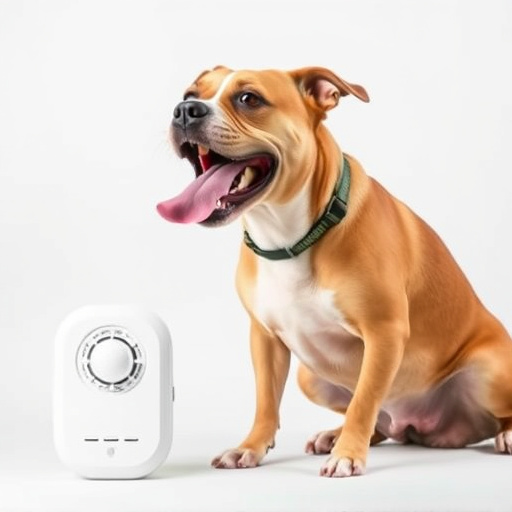Handheld dog deterrents, using sonic technology to emit high-frequency sounds unpleasant to dogs but harmless to humans, offer a non-lethal solution for urban areas with uncontrolled dog populations. Effective deployment relies on creative carrying methods like wands, wearable units, or holsters, allowing authorized personnel to promptly address problematic dog behavior in public spaces without causing discomfort. Carrying methods such as belts, pouches, and durable bags ensure these deterrents are readily available, effective, and well-protected for various scenarios. Proper training, strategic planning, regular maintenance, and evaluation of sound settings are crucial for responsible deployment.
Neighborhood dog control has become a pressing concern, with sonic equipment emerging as a potential solution. This article explores effective strategies to manage canine behavior without causing harm. We delve into the world of handheld dog deterrents, their types, and optimal carrying methods. From understanding the challenges to best practices in public spaces, discover how these tools can foster peaceful coexistence between dogs and communities. Learn about safe and responsible usage, including key considerations when employing handheld dog deterrents as a modern solution for noise control.
- Understanding Neighborhood Dog Control and Sonic Equipment
- Types of Handheld Dog Deterrents: An Overview
- Effective Carrying Methods for Handheld Devices
- Considerations and Best Practices for Using Sonic Equipment in Public Spaces
Understanding Neighborhood Dog Control and Sonic Equipment
In many urban areas, managing dog populations and ensuring their control within specific neighborhoods has become a growing concern. This is where handheld dog deterrent equipment steps in as a potential solution. Such devices, often utilizing sonic technology, emit high-frequency sound waves that are designed to be annoying or even painful to dogs without causing them harm. Understanding the principles behind these deterrents is key to effective implementation. By employing creative handheld dog deterrent carrying methods, these tools can be efficiently deployed by authorized personnel, such as animal control officers, to address problematic dog behavior in public spaces.
Sonic equipment has evolved to become a popular choice for neighborhood dog control due to its non-lethal nature and ability to target specific animals without affecting humans or other pets. These devices often come in various forms, including handheld wands, triggers, or even wearable units. The technology works by emitting sounds within the dog’s hearing range but outside the range of human perception. This ensures that dogs are deterred without causing any discomfort or injury to people nearby. Efficient handheld dog deterrent carrying methods enable prompt response and targeted intervention, making it an appealing solution for community-based dog control initiatives.
Types of Handheld Dog Deterrents: An Overview
Handheld dog deterrents have evolved significantly, offering a range of options for effective and safe pet control. These devices typically use sound waves or ultrasonic tones to discourage dogs from approaching or lingering in specific areas. One common type is the handheld wand, which emits high-frequency sounds that are unpleasant to dogs but generally harmless to humans. These wands are versatile and can be carried in hand, making them ideal for quick responses to off-leash dogs in public spaces.
Another variety is the device worn like a clip or attached to a leash, offering continuous protection without requiring manual activation. These clips or tags often use a combination of ultrasonic sounds and vibrations to deter dogs, with adjustable settings to accommodate different situations and dog breeds. The choice of handheld dog deterrent depends on personal preference, the specific needs of the area being controlled, and the user’s comfort level with handling the equipment. Efficient carrying methods are also crucial; some models come with belts or pouches designed for easy transport, ensuring these deterrents are readily available when needed.
Effective Carrying Methods for Handheld Devices
When it comes to implementing handheld dog deterrent equipment, proper carrying methods are essential for ensuring effectiveness and user safety. One popular approach is to utilize a secure holster designed specifically for the device. These holsters can be attached to a belt or vest, keeping the device close at hand while allowing for quick deployment when needed. This method is particularly useful for professionals who need to manage multiple dogs simultaneously.
Additionally, many users opt for durable bags or pouches that protect the device from damage and weather conditions. These carrying options are versatile and can be comfortably worn during walks or patrols. By employing suitable handheld dog deterrent carrying methods, individuals can efficiently control canine behavior while remaining mobile and prepared for any situation.
Considerations and Best Practices for Using Sonic Equipment in Public Spaces
When employing sonic equipment for neighborhood dog control in public spaces, several key considerations come into play to ensure effectiveness and safety. Users should prioritize handheld dog deterrents designed for outdoor use, considering factors like battery life, weather resistance, and range. Proper training is essential; operators must understand how to deploy the devices responsibly, aiming for specific behaviors without causing harm or distress to animals or bystanders.
Best practices dictate a strategic approach. This includes identifying problem areas, understanding local regulations regarding noise levels and animal control, and involving community members in the solution. Regular maintenance and calibration of equipment are crucial, while storing devices securely when not in use, employing appropriate carrying methods like durable holsters or bags, helps maintain their integrity. Additionally, evaluating different sound frequencies and intensities can help pinpoint the most effective settings for specific canine behaviors.
In conclusion, handheld dog deterrents, along with proper carrying methods, offer a practical solution for managing canine behavior in public spaces. By understanding different types of equipment and adhering to best practices, residents can effectively navigate the use of sonic technology while ensuring safety and respect for all community members. Remember, responsible handling of these devices is key to maintaining peaceful coexistence with our four-legged neighbors.
